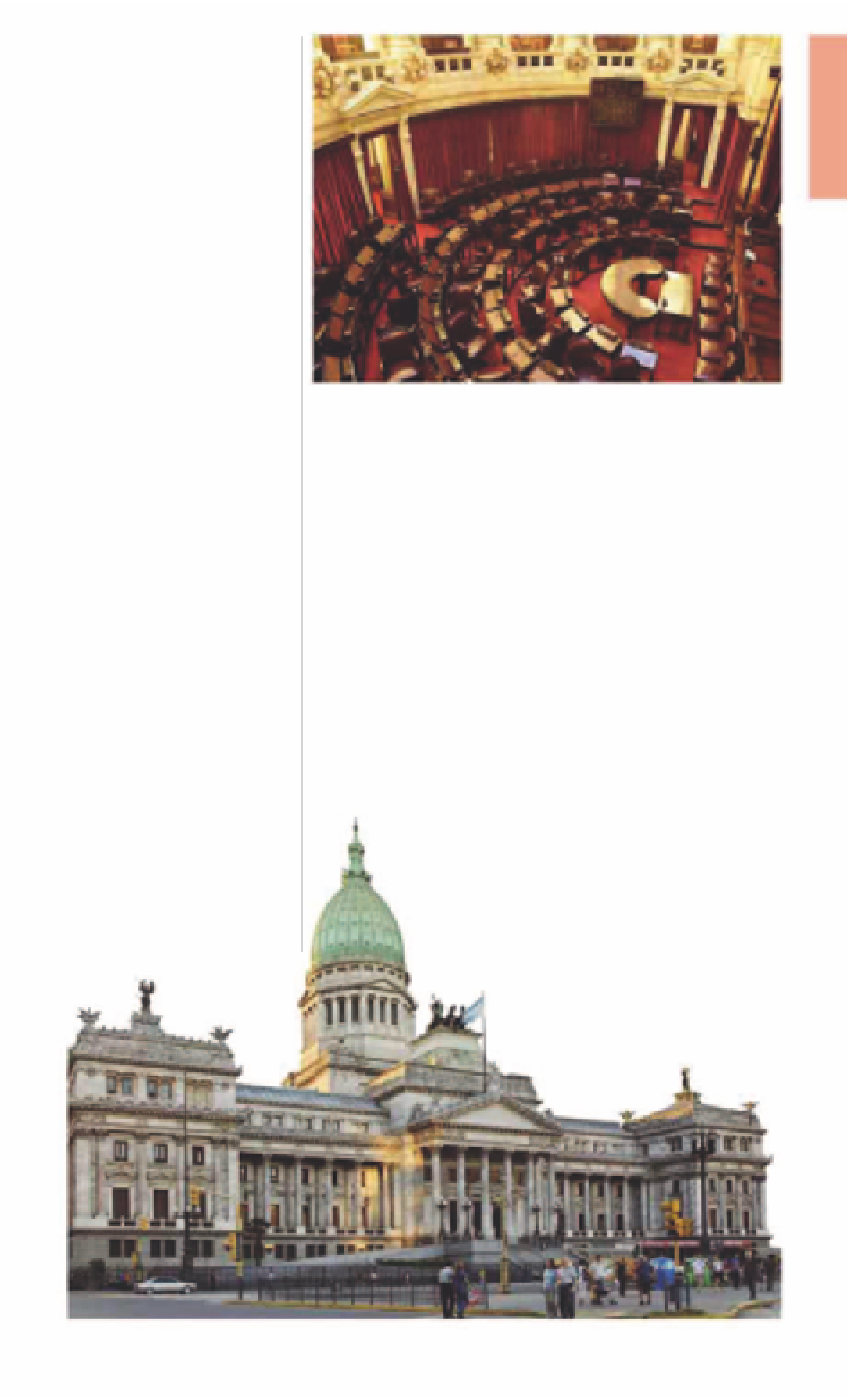Travel Reference
In-Depth Information
r
Plaza del
Congreso
Hipólito Yrigoyen.
City Map
2 C5.
Congreso. Palacio del Congreso:
Te l
(011) 4010-3000 (ext. 3885).
Open
for guided tours only, in English
11am & 5pm Mon-Fri.
∑
congreso.gov.ar
Argentina's government is
modeled on the bicameral
system of the US, and the
domed
Palacio del Congreso
shares its architecture with the
white Greco-Roman Congress
structure in Washington, DC.
One of the last buildings of this
type to be erected in Buenos
Aires before the strong wave of
fashionable Francophile
architecture took over, the
Congreso (as most porteños call
the building) is a solid-looking
granite-and-marble guardian of
Plaza del Congreso to its east.
Inaugurated in 1906 and
designed by Vittorio Meano,
who was also the architect of
the Teatro Colón, the building is
situated to face the
Casa
Rosada
at the other end of
the Avenida de Mayo, a
symbolic reminder that power
does not only belong to
presidents but also to the
people of the country. Inside
the Congreso is a library and
several lavish salons, including
the famous Salón Azúl (Blue
Room), with its colossal
allegorical statues and an
impressive 4,400 lb (2,000 kg)
bronze chandelier beneath the
main cupola. The room has
been used over the years
Inside the Cámara del Senado (Senate) of the Palacio del Congreso
for presidents lying in state.
Out on the plaza, the exuberant
centerpiece is the
Monumento
a los Dos Congresos
, built
to commemorate the first
constitutional assembly of 1813
and the Congress of 1816. This
imposing statue of the Republic
waves a symbolic laurel branch
and leans on a plow; below
it are two female figures
performing the patriotic duties
of bearing the national arms
and breaking the chains of
enslavement.
On the smaller plaza to the
east is the far calmer figure of
Rodin's
Thinker,
one of the two
copies in the Americas
,
who sits beneath the
shade of the leafy
jacaranda,
tipa
, and
ceibo trees; close
by is a statue of
Mariano Moreno
(1788-1811), a
famous and revered Argentinian
thinker, lawyer, and journalist,
who was also one of the leading
lights in the Revolución de
Mayo of 1810
(see p53)
.
Surrounding the Plaza del
Congreso is a scattering of
interesting buildings, many of
which evoke a more luxurious
and wealthier past for porteños.
One of the grandest, though
gradually falling into disrepair, is
the
Confitería Molino
(Windmill
Café), named for the decorative
windmill adorning its façade.
Crowds of politicians used to
drink their morning coffee here.
The impressive
Edificio de la
Inmobiliaria
, at the far eastern
end of the plaza, adds an Italian
and Oriental dash to the eclectic
architecture of the barrio.
After the Plaza de Mayo,
the Plaza del Congreso, apart
from being a popular tourist
spot, is one of the regular
meeting places for protesters,
student political parties,
striking unions, and, as the
evidence suggests, innovative
graffiti artists.
The imposing pillared façade and dome of the Palacio del Congreso


































